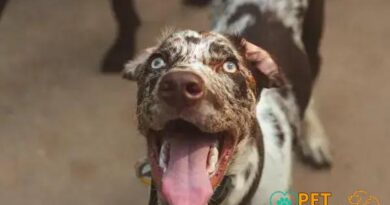What is Noise avoidance
Understanding Noise Avoidance
Noise avoidance refers to the strategies and techniques employed to minimize exposure to unwanted sounds, particularly in environments where dogs are present. This concept is crucial for pet owners who wish to create a calm and peaceful atmosphere for their furry companions. By understanding noise avoidance, dog owners can better manage their pets’ stress levels and overall well-being.
The Importance of Noise Avoidance for Dogs
Dogs, like humans, can experience anxiety and stress due to loud noises. Thunderstorms, fireworks, and even everyday household sounds can trigger fear responses in sensitive dogs. Implementing noise avoidance techniques can significantly improve a dog’s quality of life, helping them feel safe and secure in their environment.
Common Sources of Noise That Affect Dogs
Various sounds can disturb dogs, including loud music, vacuum cleaners, and construction noises. Understanding these common sources of noise is essential for pet owners. By identifying potential triggers, owners can take proactive steps to minimize their pets’ exposure to these disruptive sounds, thereby enhancing their comfort and tranquility.
Techniques for Effective Noise Avoidance
There are several effective techniques for noise avoidance that dog owners can implement. Creating a designated quiet space in the home, using soundproofing materials, and providing calming music or white noise can help drown out disruptive sounds. Additionally, training dogs to associate certain noises with positive experiences can also aid in reducing their anxiety.
Creating a Safe Space for Your Dog
Establishing a safe space for your dog is a fundamental aspect of noise avoidance. This area should be comfortable and familiar, equipped with their favorite toys and bedding. When loud noises occur, encouraging your dog to retreat to this safe space can help them feel more secure and less anxious.
Using Desensitization Techniques
Desensitization is a powerful method for helping dogs cope with noise. This technique involves gradually exposing dogs to the sounds that trigger their anxiety at a low volume and rewarding them for remaining calm. Over time, this can help dogs build tolerance to these noises, reducing their fear response.
Calming Products for Noise Sensitivity
Various calming products are available to assist dogs who are sensitive to noise. Thundershirts, calming collars, and anxiety wraps can provide comfort during stressful situations. Additionally, pheromone diffusers and calming supplements may also help alleviate anxiety, making noise avoidance more effective.
Recognizing Signs of Noise Anxiety in Dogs
Being able to recognize signs of noise anxiety in dogs is crucial for effective noise avoidance. Common indicators include excessive barking, trembling, hiding, and destructive behavior. By being attentive to these signs, dog owners can take timely action to implement noise avoidance strategies and support their pets.
The Role of Professional Help in Noise Avoidance
In some cases, professional help may be necessary for dogs with severe noise anxiety. Consulting with a veterinarian or a certified animal behaviorist can provide valuable insights and tailored strategies for managing noise-related issues. These professionals can recommend specific training techniques or medications to help improve a dog’s response to noise.
Long-Term Benefits of Noise Avoidance
Implementing noise avoidance strategies can lead to long-term benefits for both dogs and their owners. A calmer dog is often a happier dog, leading to a more harmonious household. By prioritizing noise avoidance, pet owners can foster a nurturing environment that promotes their dog’s emotional and psychological well-being.




